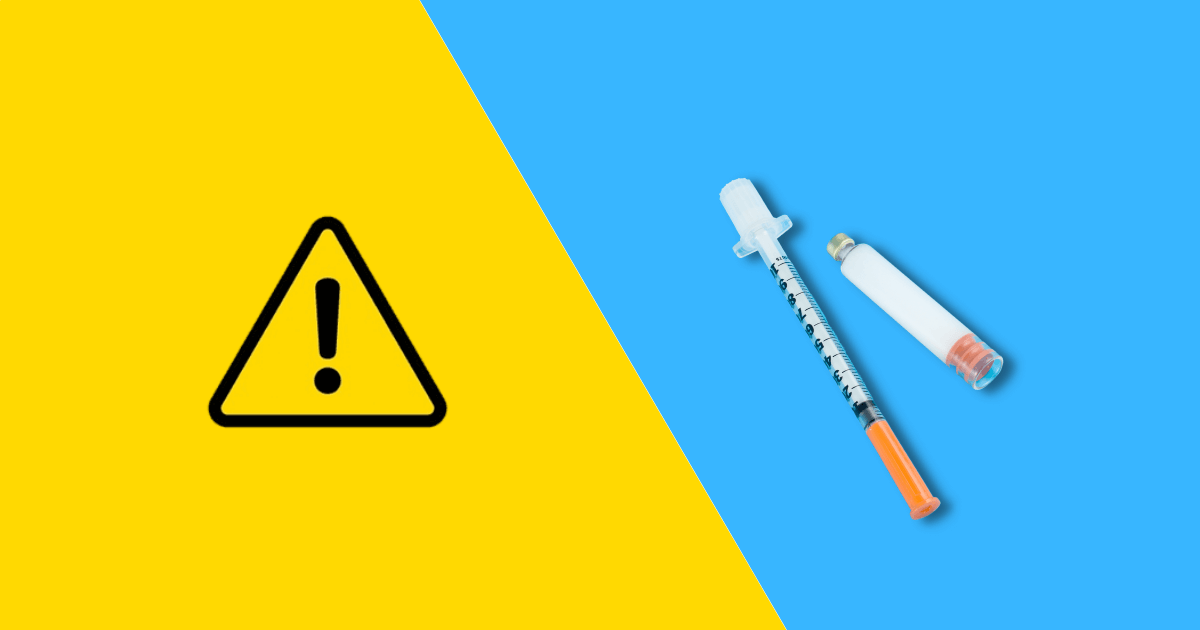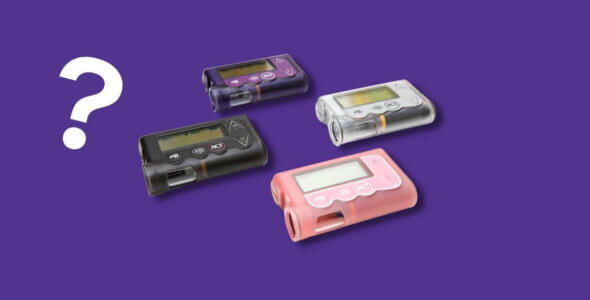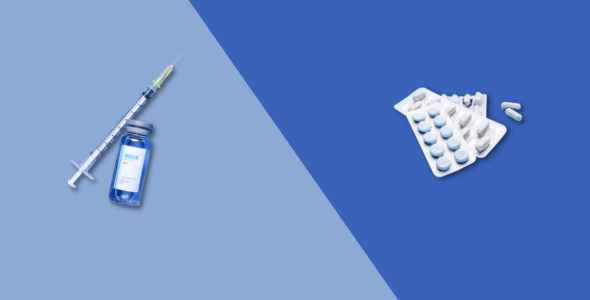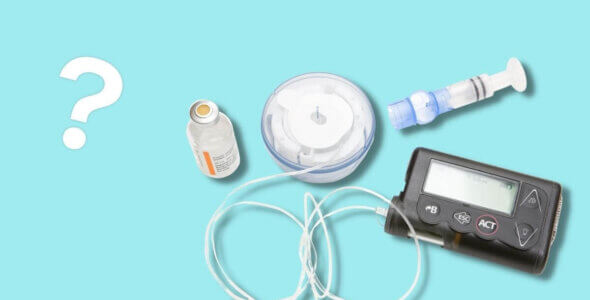The side effects of insulin
Table of contents
Diabetes is a group of diseases that cause your blood glucose levels to rise too high, harming your health. A range of medications can help you manage your blood glucose levels and reduce your risk of diabetes complications. However, as with all medications, those prescribed for diabetes can cause unwanted side effects.
The side effects caused by most insulins are usually mild. But in rarer instances, they can cause more serious side effects. Here we explain the different types of medications available for diabetes, the side effects they can cause, and what you can do to reduce the risk of any potential harm.
What medication is taken for diabetes?
The most widely used diabetes medications include:
- Insulin: You can inject insulin to increase how much glucose your cells absorb. The insulin you inject is the same as the insulin that your pancreas naturally produces, except it can be tailored to be faster or longer acting. Insulin is the most widely used treatment for type 1 diabetes but can also be used to treat type 2 diabetes.
- Sulfonylureas: A type of oral medication, sulfonylureas work by increasing how much insulin your pancreas produces, raising your insulin levels, and causing your cells to absorb more glucose from your blood. Sulfonylureas are used to treat type 2 diabetes.
- Biguanides and metformin: Two similar classes of diabetes medication that reduce how much stored glucose is released into your blood and increase how much glucose your cells absorb. You take both medications orally as a tablet. They are used most often to treat type 2 diabetes but can also be used to treat type 1 diabetes.
- Alpha-glucosidase inhibitors: A group of medications that reduce how much carbohydrate and sugar you break down and absorb when you digest food and drink. This reduces how much glucose sugar is released into your blood. Alpha-glucosidase inhibitors are taken orally as a tablet and are used to treat type 2 diabetes.
- Thiazolidinediones: A form of type 2 diabetes medication, thiazolidinediones reduce how much fat is available to your cells for energy. This causes your cells to absorb more glucose from your blood for energy instead. You take thiazolidinediones orally as a tablet.
- Meglitinides: Taken to increase the levels of insulin produced by your pancreas, meglitinides are used to treat type 2 diabetes. The medication is taken orally as a tablet.
- SGLT2 inhibitors: Taken to reduce how much glucose is recycled back into your blood by your kidneys, causing more glucose than usual to be expelled in your urine. You take SGLT2 inhibitors as a tablet to treat type 2 diabetes.
Common side effects of diabetes medications
The most common side effects caused by diabetes medications may include:
- Reactions at the site of injection
- Allergic reactions
- Swelling of your hands and feet
- Weight gain
- Low blood sugar (hypoglycemia)
- Diarrhea
- Feeling and being sick
- Tiredness
- Dizziness
- A metallic taste in the mouth
- Stomach pain and abdominal cramps
- Headaches
- Upper respiratory tract infections
Full details on the side effects for each group of insulin medication are given below, including details on rarer but more serious side effects and what you can do to minimize side effects.
Insulin side effects
The most common side effects caused by insulin include:
- Reactions at the site of injection, such as itching, rashes, skin thickening, or pits forming in your skin (lipodystrophy)
- Allergic reactions that can cause swelling of your face, tongue, or throat
- Fluid build-up that causes swelling in your hands, feet, and ankles
- Weight gain
- Low blood sugar (hypoglycemia). This can cause you to feel tired, hungry, faint, and easily irritated. It may also cause excessive sweating and dizziness, make you tremble and shake, make your lips tingle, and can give you heart palpitations
Rarer, but more serious side effects caused by insulin include:
- Serious allergic reactions to the medication that can cause anaphylaxis – a full-body allergic response that can be dangerous
- Your blood potassium falling too low (hypokalemia) – this can cause you to feel tired and weak, as well as cause leg cramps and constipation. It can also increase the risk of an abnormal heart rhythm that can lead to heart failure
- Extremely low blood sugar (hypoglycemia) – which can cause blurred vision, sleepiness, confusion, problems concentrating, seizures, loss of consciousness, and comas
- Heart failure – this is more likely if you take insulin alongside another type of diabetes medication called thiazolidinediones
How can you reduce insulin side effects?
You will minimize your risk of insulin side effects by taking the medication exactly as described by the doctor who prescribed it to you. Talk to your doctor if you experience side effects, as they may decide to alter your prescription.
You can reduce your risk of low blood sugar levels by:
- Sticking to a daily routine of meals
- Injecting your insulin at set times each day
- You can also measure your blood glucose using a blood glucose monitor to make sure you don’t inject insulin when your glucose levels are already low
Weight gain is a common side effect of insulin. Talk to your doctor about changes you can make to your lifestyle, like exercise and diet changes, to help reduce any weight gain.
If you try the above and still find your insulin is giving you unpleasant side effects, you should talk to your doctor about changing the type of insulin you take. There are multiple brands of insulin available. Although they are all similar they have differences and you may find you tolerate some better than others. Common insulin brands include:
Sulfonylureas side effects
The most common side effects caused by sulfonylureas include:
- Diarrhea
- Feeling sick
- Skin rashes
- Itching
- Weight gain
- Low blood sugar (hypoglycemia)
Rarer, but more serious side effects caused by sulfonylureas include:
- Serious allergic reactions to the medication that can cause anaphylaxis – a full-body allergic response that can be dangerous
- Inflammation of the liver that can reduce your liver function
- A fall in red blood cell counts that can cause anemia
- Extremely low blood sugar (hypoglycemia). This can cause blurred vision, sleepiness, confusion, problems concentrating, seizures, loss of consciousness, and comas
How can you reduce sulfonylureas’ side effects?
You can reduce your risk of side effects and low blood sugar levels by:
- Taking your sulfonylurea medication exactly as described by your doctor who prescribed it to you
- Sticking to a daily routine of meals at the same time each day
- Taking your medication at set times each day
Sulfonylureas can cause some people to gain weight. It is important to talk to your doctor about changes you can make to your lifestyle to help reduce any weight gain. This includes both exercise and diet changes.
If you try the above and find you still have side effects that you cannot live with, talk to your doctor about trying an alternative brand of sulfonylurea. Popular sulfonylurea brands include:
If this does not help your doctor may switch you to another diabetes medication as several of the medications mentioned here can be used in place of sulfonylureas.
Biguanides and metformin side effects
The most common side effects caused by biguanides and metformin include:
- Diarrhea
- Feeling sick
- Being sick
- Tiredness
- Dizziness
- Changes in taste and a metallic taste in the mouth
Rarer, but more serious side effects caused by biguanides and metformin include:
- A buildup of lactic acid in the blood (lactic acidosis) that can be dangerous and cause comas
- Low vitamin B12 levels that can cause a vitamin B12 deficiency
- Very low blood sugar (hypoglycemia), which can cause blurred vision, sleepiness, confusion, problems concentrating, seizures, loss of consciousness, and comas
How can you reduce biguanides and metformin side effects?
You can reduce the common digestive side effects caused by biguanides and metformin by taking your tablets before a meal or on a full stomach. If you take two or three doses of your medication a day, it can also help to spread your doses over the day with equal time between them.
To reduce your risk of low blood sugar levels and other side effects, make sure you:
- Stick to a daily routine of meals
- Take your medication at set times every day
Remember to always take your biguanides and metformin medication exactly as described by the doctor who prescribed it to you. Talk to your doctor if you still experience side effects as they may alter your prescription or the brand of medication. Popular biguanides and metformins include:
Alpha-glucosidase inhibitor side effects
The most common side effects caused by alpha-glucosidase inhibitors include:
- Bloating
- Gas
- Diarrhea
- Abdominal cramps
- Stomach pain
Rarer, but more serious side effects caused by alpha-glucosidase inhibitors include:
- Serious allergic reactions to the medication that can cause anaphylaxis
- Inflammation of the liver that can reduce your liver function
- A fall in blood platelets counts that can result in bleeding problems, as your blood cannot clot
- Pockets of gas forming in your lungs (pneumatosis intestinalis)
How can you reduce alpha-glucosidase inhibitor side effects?
- Take your medication exactly as directed by the doctor who prescribed it to you to minimize your chances of side effects
- Most of the common side effects of alpha-glucosidase inhibitors affect your digestive system. These tend to be short-lasting and they often go away as your body gets used to the medication. It can help to start on a low dose and gradually build up to give your digestive system time to adjust to the medication
If side effects persist talk to your doctor about trying an alternative brand of alpha-glucosidase inhibitor. Common brands include:
- Glyset
- Precose
If this still does not help, talk to your doctor about switching to an alternative type of diabetes medication.
Thiazolidinediones side effects
The most common side effects caused by thiazolidinediones include:
- Headaches
- An increase in upper respiratory tract infections (like colds and throat infections)
- Fluid build-up that causes swelling in your hands, feet, and ankles
- Weight gain
Rarer, but more serious side effects caused by thiazolidinediones include:
- Heart failure when thiazolidinediones are taken with insulin
- Bladder cancer
- Serious allergic reactions to the medication that can cause anaphylaxis
- An increased risk of broken bones in women
- Incredibly low blood sugar (hypoglycemia) when used alongside other diabetes medications. This can cause blurred vision, sleepiness, confusion, problems concentrating, seizures, loss of consciousness, and comas
How can you reduce thiazolidinediones’ side effects?
- Take your medication exactly as directed by the doctor who prescribed it to you to minimize your chances of side effects
- You can reduce your risk of low blood sugar levels by sticking to a daily routine of meals and taking your medication at set times
- Thiazolidinediones can cause weight gain, which you can address through making lifestyle changes, like eating a lower calorie diet and exercising regularly. Talk to your doctor about effective weight loss
If the above does not work for you and you still experience side effects talk to your doctor about trying an alternative brand of thiazolidinedione. Popular thiazolidinediones include:
If this does not help talk to your doctor about switching to an alternative diabetes medication. A range of other diabetes medications can be used in place of thiazolidinediones.
Meglitinides side effects
The most common side effects caused by meglitinides include:
- Stomach pain
- Indigestion
- Feeling sick
- Diarrhea
- Weight gain
- Low blood sugar (hypoglycemia). This can cause you to feel tired, hungry, and faint. You may also feel irritated and experience excess sweating and dizziness. You may even tremble and shake, feel your lips tingle, and experience heart palpitations
Rarer, but more serious side effects caused by meglitinides include:
- Serious allergic reactions to the medication that can cause anaphylaxis
- Very low blood sugar (hypoglycemia) when used alongside other diabetes medications, which can cause blurred vision, sleepiness, confusion, problems concentrating, seizures, loss of consciousness, and comas
How can you reduce meglitinide side effects?
- You reduce your risk of side effects if you take your meglitinide medication exactly as directed by the doctor who prescribed it to you
- You can reduce your risk of low blood sugar levels by keeping to a daily routine of having meals and taking your medication at set times to avoid spikes and falls in blood sugar
If you still experience side effects talk to your doctor about trying an alternative brand of meglitinide medication. Popular meglitinide brands include:
- Prandin
- Prandimet
- Starlix
If this does not help, talk to your doctor about switching to an alternative diabetes medication.
SGLT2 inhibitors side effects
The most common side effects caused by SGLT2 inhibitors include:
- Nausea
- Constipation
- Dehydration
- Risk of genital yeast infections
- Risk of urinary tract infections
- Low blood sugar (hypoglycemia) – causing you to feel tired, hungry, faint, and easily irritated. You may also experience excessive sweating and dizziness. You may tremble and shake, your lips can tingle, and you might experience heart palpitations
Rarer, but more serious side effects caused by SGLT2 inhibitors include:
- Inflammation of the pancreas
- Diabetic ketoacidosis – a condition where high levels of ketones build up in your body, that can cause fatigue, confusion, vomiting, and swelling of the brain
- A rare bacterial infection that damages the tissue under the skin in the area between the anus and genitals (necrotizing fasciitis)
- Serious allergic reactions to the medication that can cause anaphylaxis, a full body allergic response that can be dangerous
- Kidney failure
- Hypoglycemia when used alongside other diabetes medications. This is very low blood sugar levels which can cause blurred vision, sleepiness, confusion, problems concentrating, seizures, loss of consciousness, and comas
How can you reduce SGLT2 inhibitor side effects?
- Take your medication exactly as directed by the doctor who prescribed it to you
- Keep to a daily routine of meals and medication at set times to avoid spikes and falls in blood sugar
If the side effects persist speak to your doctor about trying an alternative brand of SGLT2 inhibitor medication. Popular SGLT2 inhibitor brands include:
If this does not help talk to your doctor about switching to an alternative diabetes medication. Many of the other diabetes medications mentioned here can be used as an alternative to SGLT2 inhibitors.
Disclaimer
This article is for informational purposes only and does not constitute medical advice. If you are worried about the side effects of your diabetes medications or have any other concerns or questions about diabetes, talk to your doctor or pharmacist.
If your doctor has prescribed a diabetes medication to you, you may be able to receive your prescription for only $49 per month with NiceRx. Complete our online enrollment application to find out if you are eligible for prescription assistance.
Medically reviewed
A medical professional has reviewed this article.


Jamie Winn, PharmD
Jamie Winn, PharmD
Dr. Jamie Winn received his Doctor of Pharmacy in 2002 from the University of South Carolina College of Pharmacy, Columbia, SC. Jamie is a medical reviewer for NiceRx.







